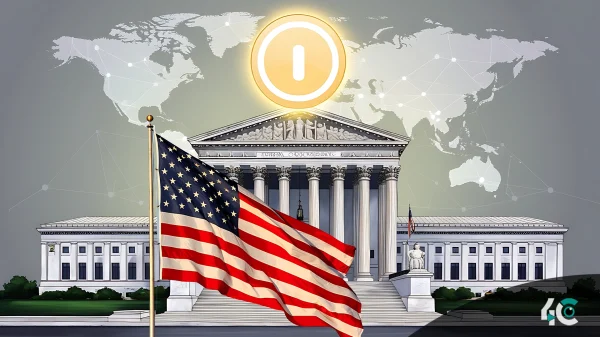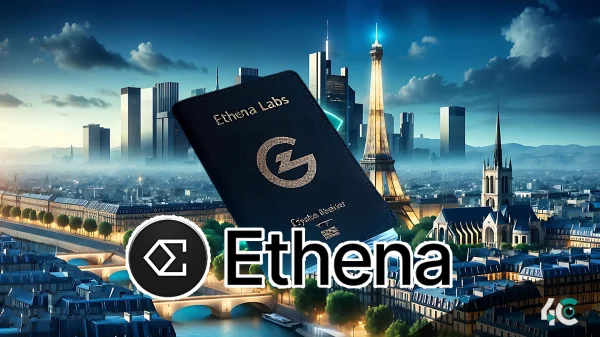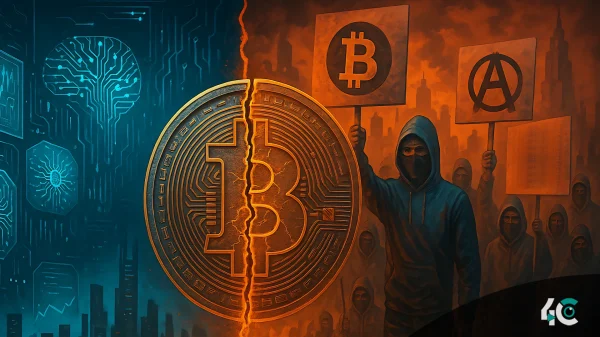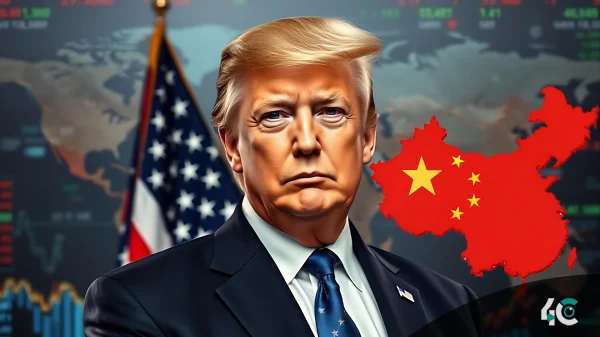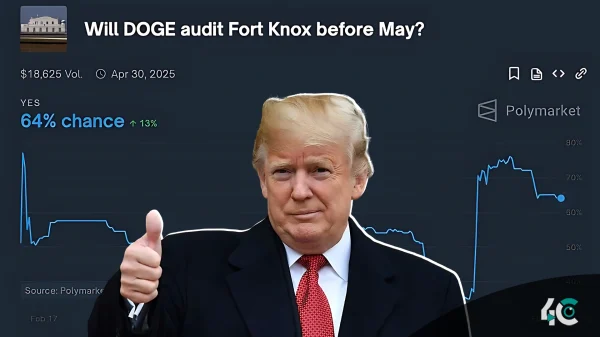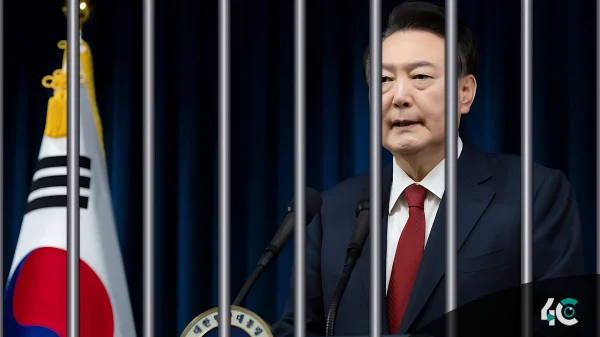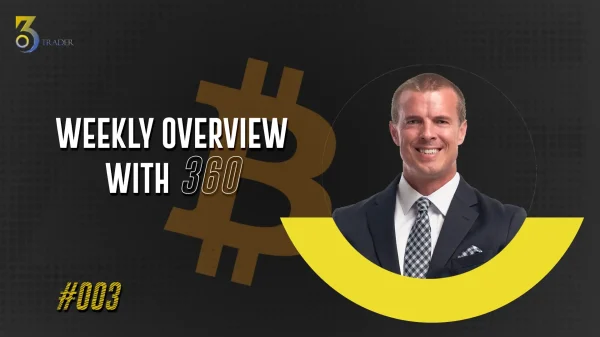The crypto identity crisis is becoming increasingly clear as tensions rise between the industry’s tech-driven innovation and its original ideological goals of decentralization and financial freedom. With regulation tightening and large institutions entering the space, questions are emerging about what crypto truly stands for and where it’s heading next.
From Radical Vision to Mainstream Movement
Cryptocurrency was all about being rebellious in the past. The vision for Bitcoin was outlined in the whitepaper published by the pseudonymous Satoshi Nakamoto in 2008. Nakamoto outlined his vision of a world where individuals transact freely with each other without an intermediary like banks or the government. At this point, Ethereum further expanded this dream by creating dApps that would go beyond finance as we know it to disrupt different industries.
Since then, the narrative has changed drastically by 2025. These days, crypto is no longer simply the purview of anarchists and techies—it’s a multi-trillion-dollar industry drawing in Wall Street firms, Fortune 500 companies, and even nation-states. We have witnessed the approval of spot Bitcoin ETFs, the provision of crypto custody services by major banks, and the widespread use of stablecoins for remittances and payroll.
Has crypto lost its way? This question elicits diverse opinions within the community. Has crypto gone too far from its origins?
The Ideal Perspective: Staying True to Decentralization.
For crypto hardliners, compromise amounts to betrayal. These advocates assert that decentralization, censorship resistance, and trustlessness should not be compromised. Any alignment with traditional institutions is perceived as centralization, thereby detracting from the purpose of blockchain.
“Crypto was designed to take power away from the elites,” said Dr. Laura Martinez, a blockchain historian. The billionaires and companies are using it for their benefit now. “It appears to be a betrayal of all our protests.”
Purists point to several troubling trends
Most bitcoin transaction volume takes place through centralized exchanges. These include famous trading platforms such as Binance and Coinbase. However, these platforms create single points of failure. As a result, they are vulnerable to hacks and regulatory pressure.
Projects whose KYC and AML compliance takes precedence over anonymity risk alienating the user set that is after anonymity.
Some people don’t agree about the tokenization of everything from real estate to carbon credits, as it weighs profit over principle.
Some developers are working harder to make decentralized alternatives more popular. People are still using privacy coins like Monero and Zcah, which are gaining more users. In addition, communities supporting DAOs and P2P networks wish to keep the dream of true decentralization alive.
How the Pragmatist Model Can Help.
On the other hand, pragmatists argue that compromise is necessary to grow. They claim that the crypto will be unable to gain mainstream adoption if there isn’t regulatory clarity and institutional buy-in.
Fintech strategist James Carter stated, “We can’t stay in 2009 forever.” If they want to change the world, crypto needs to play nice with our existing systems rather than trying to fight them.
Pragmatists emphasize multiple milestones as proof of progress.
The Bitcoin ETFs have facilitated the entry of pension funds and retail investors into the asset class.
More and more businesses are looking to integrate cryptocurrencies into their payment systems. Tesla and PayPal are already doing it.
The daily transactions of billions that occur with Tether and USDC show that crypto can be for so much more than speculation.
Critics accuse the first ones of selling out; supporters counter that adapting is not the same as abandoning. Sarah Lin, a blockchain policy consultant, replied, “You don’t have to compromise your ideals to innovate responsibly.” The aim is to help everyone benefit from blockchain, not just those who are more tech-savvy.
Bridging the Divide—or Widening It?
The fight between purists and realists shows a deeper tension within the crypto community. The fundamental question is whether the focus of crypto should be on ideology or utility.
Some believe reconciliation is possible. For example, hybrid features may appeal to both by combining decentralization with ease of use. Some believe there should be more distinct differences between projects so that purists can pursue fully decentralized solutions while pragmatists can focus on scaling and integrating.
However, closing the gap won’t be simple. According to Marcus Reed, head of a blockchain analytics firm, “This isn’t just a disagreement over tactics—it’s a clash for the industry’s soul. In the end, a single vision might take precedence over the other.
What Does the Future Hold?
As the cryptocurrency world struggles with its identity crisis, the decision will shape the development of crypto for many decades to come. Will it continue as an alternative to the status quo’s system of power? Will it become a tool of the establishment, like the ‘big banks’ it threatened to topple?
One scenario is that some purist projects can flourish in underground niches while some pragmatic projects can keep up
in the mainstream. One possibility is convergence, in which innovators find ways to honor crypto’s founding principles while meeting real-world needs.
Whichever way it plays out, one thing is clear: what happens next will determine whether crypto lives up to its revolutionary promise—or simply serves as another element in the machinery it seeks to disrupt.
According to Dr. Martinez, we must choose what type of future we are creating as an industry. “Because right now we are building two completely unique ones.”






